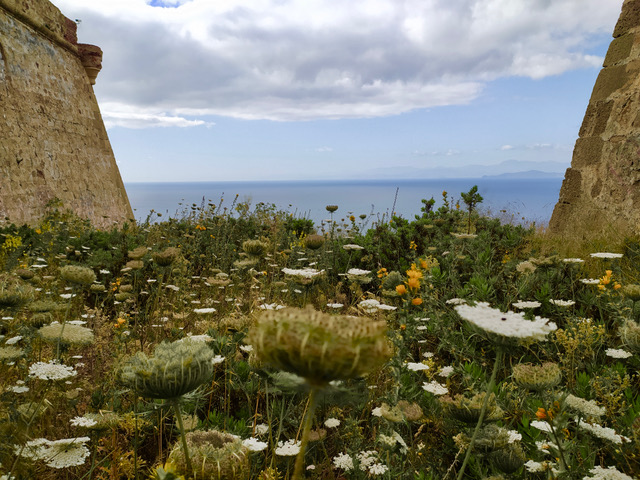
View towards Europe taken from Ceuta in Northern Africa. Photo © Karethe Linaae
Here is a riddle:
What place on the globe can you stand at a single point and see two major oceans, two continents, three nations and three kingdoms?
Answer: Ceuta
This might come as a surprise for many, particularly those who have not been to this southern Spanish town, as it is in fact situated in Northern Africa. Ceuta can be found where the Mediterranean and the Atlantic Oceans meet in the Straits of Gibraltar. The town is located on the African continent but is still part of Europe. And from the mountains above the town, there is a perfect panoramic view that includes the nations and kingdoms of Morocco, Spain, and the United Kingdom (via Gibraltar).
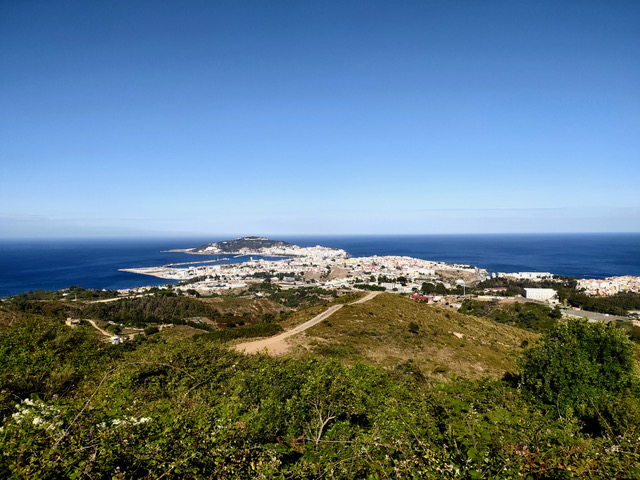
Ceuta – an arm into the Mediterranean. Photo © Karethe Linaae
Legendary Cape with many rulers
From above, Ceuta looks like an arm stretching into the Mediterranean. The elbow is the town centre, with the ‘fist’ being the town’s most eastern point. Ceuta is quite separate from the Spanish mainland and is located at one of the narrowest points of the Straits (25 km away), so that Europe can be seen across the water in normal weather conditions.
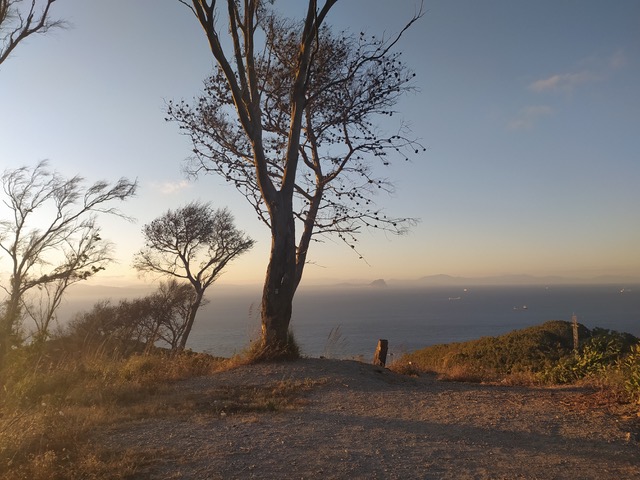
Gibraltar not too distant. Photo © Karethe Linaae
According to Greek mythology, Europa and Africa were connected via an enormous mountain range until Hercules took his club and smashed the opening which we know today as the Straits of Gibraltar. The two extreme points were called the Pillars of Hercules – the cliff of Gibraltar and Monte Hacho (or Ceuta’s ‘fist’). Even if the origin of the story is mythical, these two geographical points represented not only the separation between two world oceans, but also the dividing line between what once was considered as the known world (the Mediterranean) and the unknown world (the Atlantic Ocean and everything thereafter), before the era of the great explorers.
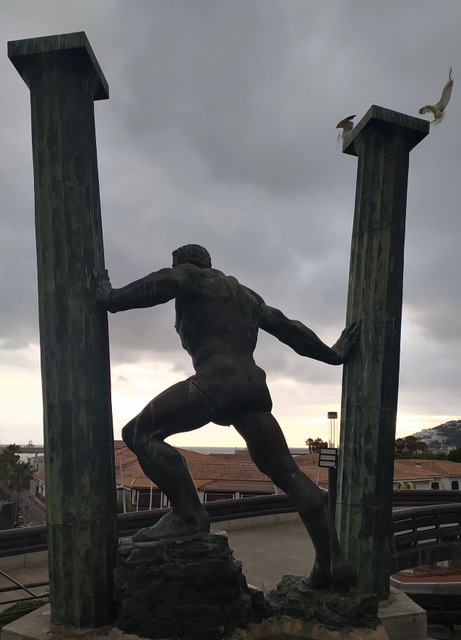
Sculpture in Ceuta of Hercules which separates Europe from Africa. Photo © Karethe Linaae
Ceuta’s strategic position made it a popular destination for conquering armies and explorers throughout history. According to the town’s archaeologists, everyone has been here, probably even the Vikings. Ceuta has been visited, conquered, and ruled by Phoenicians, Carthaginians, Romans, Visigoths, Berbers, Arabs, and finally, the Portuguese. The only ones who never conquered Ceuta by military power (even though this has been used to keep it ever since) are the Spanish. Ceuta became part of the Spanish Empire when Portugal transferred rule to Spain in the 1600s.

Once upon a time … Painted ceramic tiles by the harbour. Photo © Karethe Linaae
Many, such as the English and the Moroccans, have tried to take Ceuta since then. When Morocco became independent in 1956, after 400 years as both a Spanish and a French protectorate, Spain refused to relinquish its two Northern African coastal towns, Ceuta and Melilla. Ceuta remains Spanish, but after thousands of years, the Cape continues to be a disputed territory.
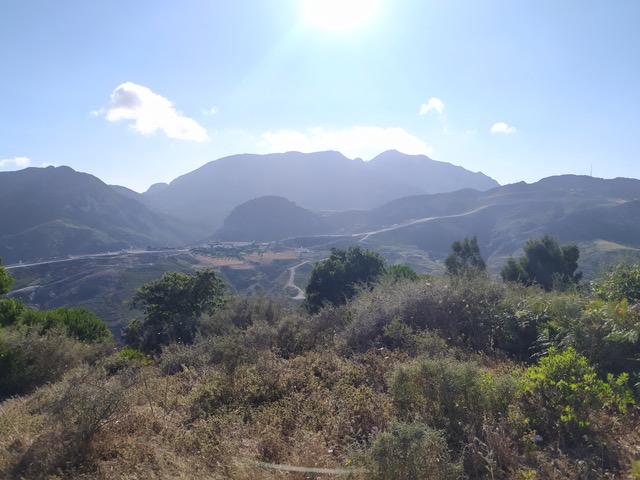
Road along the Moroccan border. Photo © Karethe Linaae
Spanish town on African continent
Together with Melilla situated 400 km to the east, Ceuta has the only physical international borders that exist between Europa and Africa. Both towns often appear on the global news, due to African immigrants and displaced people trying to enter Europe through these borders. No one can deny the enormous immigration problems, but other than this, most people know very little about Ceuta. In fact, I can count on one hand the Spaniards we know who have been there, and then only usually via an assigned post in the police force or the military.
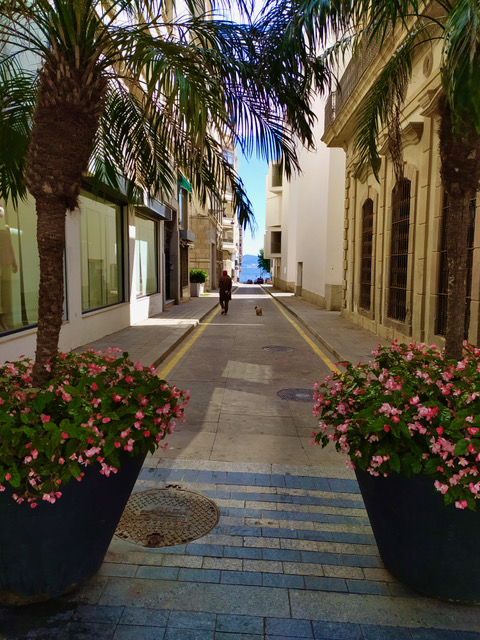
Street with the African continent in the background. Photo © Karethe Linaae
Media often shapes our understanding of the world, and many therefore only see Ceuta as a border post with desperate Africans trying to fight their way over barbed wire fencing into relative freedom in Spain. Others might perceive the town as it is portrayed in the popular TV-series El Principe (the price), the Telecinco-produced drama about forbidden love between a Spanish policeman and a Muslim woman in today’s Ceuta. The drama takes place in the colourful and primarily Muslim neighbourhood El Principe, from which the series got its name.
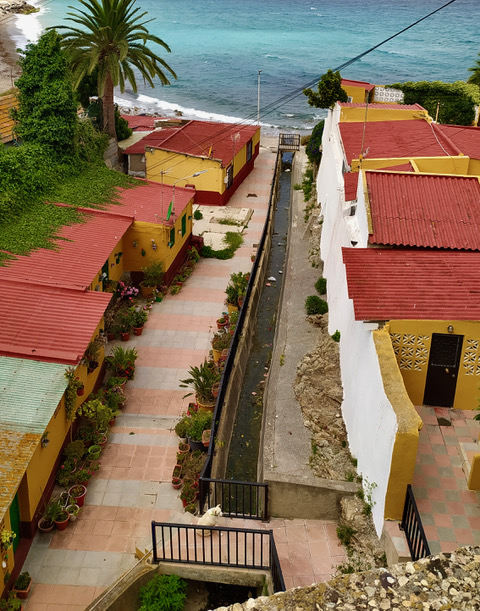
Colourful Ceuta neighbourhood. Photo © Karethe Linaae
So, is Ceuta an immigration nightmare or a romantic cultural fusion? At times the city is likely both, but though it certainly has illegal immigrants, corrupt policemen and love across religions, the city of Ceuta is so much more.
Ferry to Africa
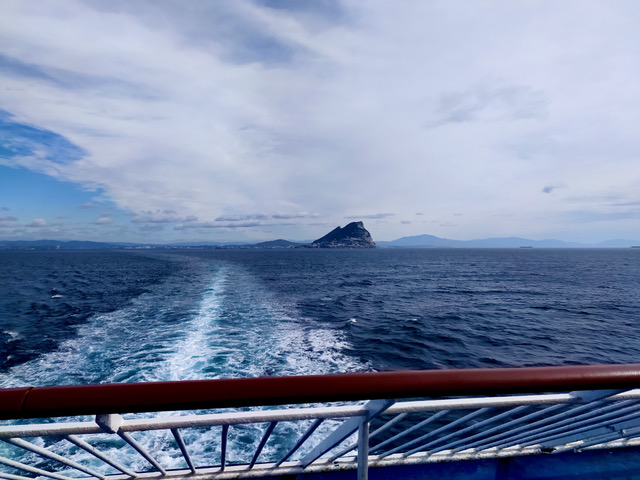
From the ferry. Photo © Karethe Linaae
Crossing the Straits of Gibraltar from Europe to Africa in an hour and a half is an experience not to be missed. The only way to get from Spain to Ceuta is by ferry (or helicopter), as the town has no airport. One must travel by boat, as people have done since time immemorial. Normally, the ferries are full to the brim with locals from Ceuta (Ceutí) and Moroccans from neighbouring towns, but these days the ferries are still relatively empty, due to the pandemic and the fact that Morocco has so far only opened the country borders to international air traffic.
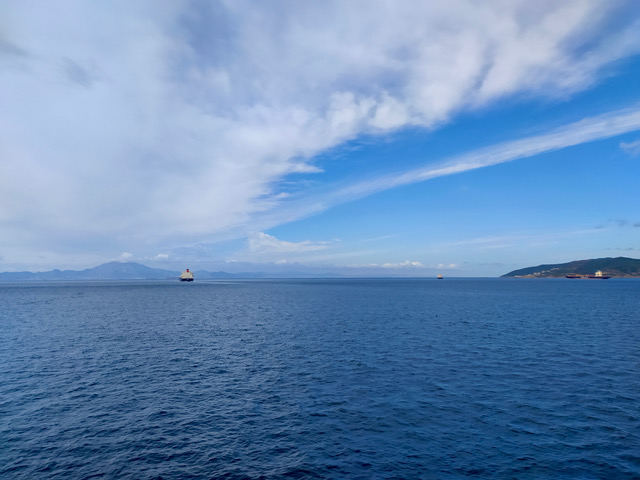
Straits of Gibraltar towards the Atlantic Ocean. Photo © Karethe Linaae
The Straits of Gibraltar are one of the busiest marine channels in the world. Around 100,000 cargo ships use it annually, or some 300 every day. In addition are the cruise ships, pleasure yachts, ferries, marine ships, smugglers speed boats, refugee barges, and other seagoing vessels. All must account for the tidal flows, which are far from insignificant in a narrow strait where two major oceans meet. The current goes both ways, with an average of 2 knots westwards and 4-7 knots in an easterly direction. It is always windy, compounded by the open sea and the currents. Crossing the Straits in a boat really brings home an understanding of the forces of nature, and is for me one of the main reasons why I recommend the trip to Ceuta.
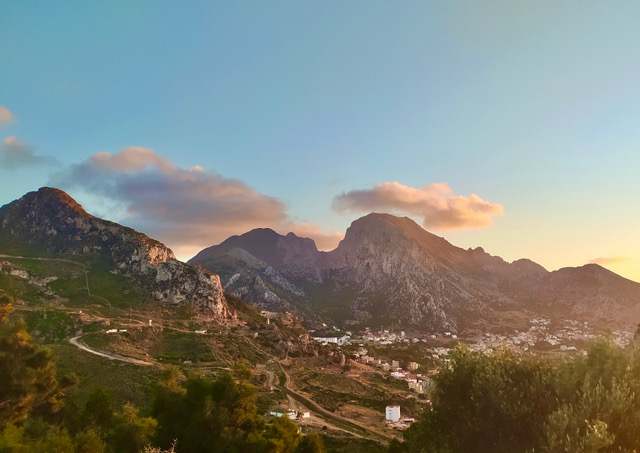
Jebel Musa, the dead woman. Photo © Karethe Linaae
As the ferry approaches North Africa, a mighty mountain range comes into view. People in Ceuta call it La Mujer Muerta (the dead woman), because it looks like the profile of a woman laying on her back. The mountain peak, Jebel Musa, which in the Berber language means ‘the mountain of Moses’, is part of the Moroccan Rif mountain-ridge. Many say that Jebel Musa is the real pillar of Hercules, instead of Hacho, but since we are talking about a myth, we may never know the real answer as to which was Hercules’ original pillar.
Today’s Ceuta
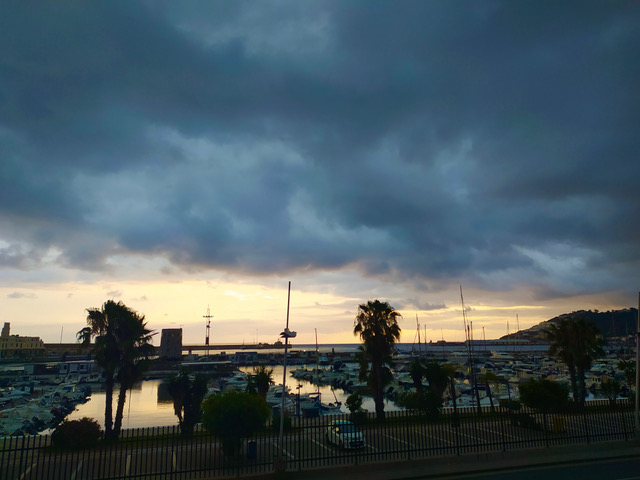
Ceuta harbour at sunrise. Photo © Karethe Linaae
Ceuta’s city centre is clean and well-groomed. The architecture is classical, and the avenues wide, as to be expected in a provincial capital. The city belonged to the province of Cádiz until 1995, when both Ceuta and Melilla became autonomous Spanish territories. For this reason, they enjoy more favourable taxation systems than the mainland. Ceuta is categorized as a tax-free zone, evident in all the Tax-free stores on the main shopping streets.
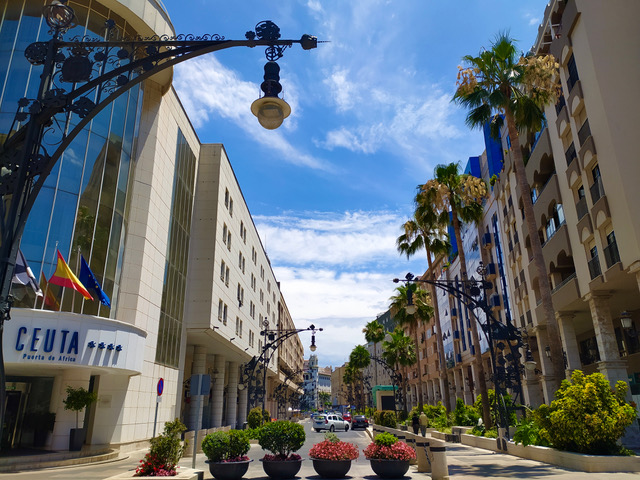
Main avenue. Photo © Karethe Linaae
When we stop to buy water, we meet a group of Arab teenagers who ask for money for food. The boys are apparently those remaining from a group of 8000 illegal immigrants who crossed the border earlier this year. Most were sent back after a tense diplomatic period which ended with Spain paying Morocco to re-close and guard their side of the international border. At least this is how the event was explained by one ceutí we met …
There is only one border crossing for cars between Ceuta and Morocco on the southernmost point of town, as well as a foot passenger crossing on the northern end of Ceuta. Our guide told us that most people who live in Ceuta have friends or family on the other side of the border. Before the pandemic, his hairdresser was in Morocco, and he often popped across the border to meet friends there.
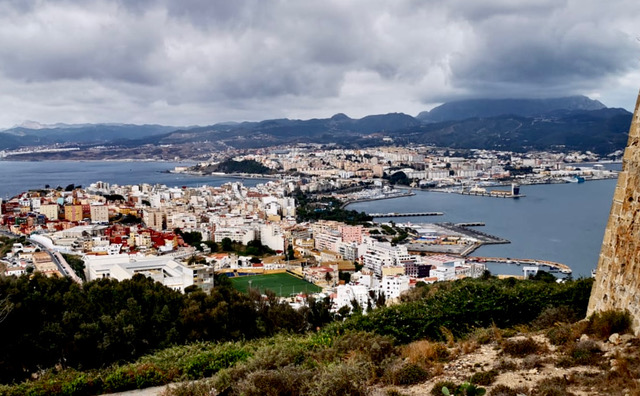
Ceuta photographed from Monte Hacho. Photo © Karethe Linaae
Today’s Ceuta is a melting pot of four cultures: Hispanic Christian, Arab (and Berber, which is very different), Jewish and Hindu. The cultural diversity is reflected in the ceutí gastronomy, which naturally is based on the sea. Of the towns 85,000 inhabitants, about half are Spanish or Moroccan Muslims. The Jewish population (with ancestry from the Sephardic Jews who were expelled from Spain in 1492) has shrunk to only about 300 people, so the historic judería neighbourhood is threatening to disappear. And while East Indians have lived here since 1893, today there are less than 500 Hindus left in the town.
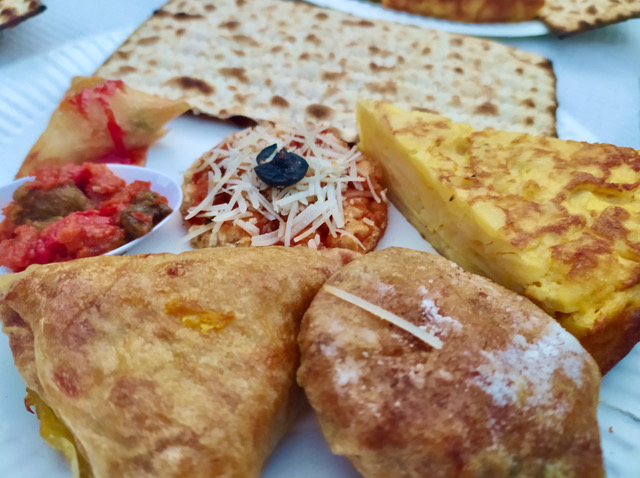
Plate with specialties from Ceuta’s four cultures. Photo © Karethe Linaae
Spanish is the official language, but many of the inhabitants speak Darija (Moroccan Arab), Berber and French. Despite the towns limited area (approximately 18,5 km2), churches and mosques can be found, as well as a synagogue and a Hindu temple. The shining cupulas of Ceuta’s cathedral are visible from both the Mediterranean and the Atlantic sides of town, as it is located on the narrowest part of the isthmus with only a handful parallel streets.

The cathedral with sea on either side. Photo © Karethe Linaae
Historical stroll
The best way to discover Ceuta is on foot. Do not miss the royal Portuguese town wall from around 1540. These defensive walls led boats from the northern to the southern bay. Today one can stroll on top of the walls and admire the view of the ocean on either side, or rent a kayak and paddle through the azure blue canal.
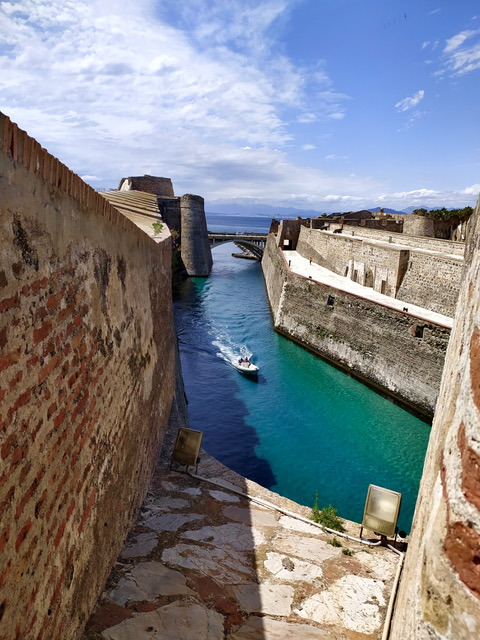
The royal waterwalls. Photo © Karethe Linaae
As humans tends to build on top of past civilisations, an older part of the defensive wall can be found inside the current wall. This includes the main entrance or the Califate gate, which was built when Abderraman II conquered Ceuta in the year 931 AD.
Other worthwhile historical sites in the city centre include a late Roman Basilica, a Merinid city wall, the Arab baths and the newer, but no less interesting dragon-encrusted casino from the 1800s. There is certainly enough for history buffs to see, and for a break how about a dip in El Parque Marítimo del Mediterráneo, designed by the famed Lanzarote-artist César Manrique? Though Ceuta has more than a dozen beaches on the coast to the north and south, the city built this enormous 56 000 m2 waterpark adjacent to the harbour in 1995. During the day it functions like any other municipal pool, while in the evenings the city’s youth gather here to hang out in the numerous bars that overlook the lit-up pools. Thank goodness my clubbing days are over!
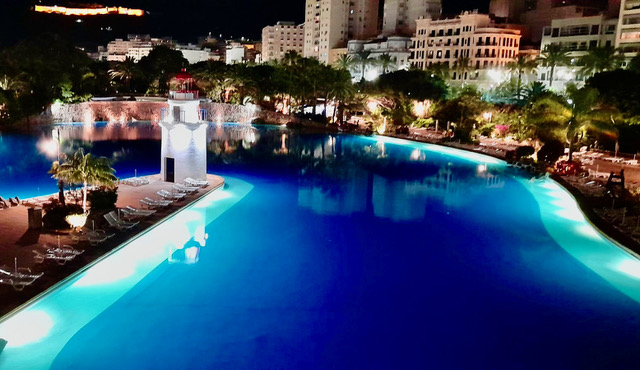
Night in the water park. Photo © Karethe Linaae
The next day, on an early morning stroll, it is the city’s sculptures that particularly catch my attention. Perhaps most surprising are the many sculptures of Greek philosophers. Our hotel is interestingly named Ulysses. So I wonder, what is Ceuta’s connection with ancient Greece?
The Greek historian Strabo portrayed Ceuta as Hepta Adelphoi in his book Geografi, which he wrote just around the time of the birth of Christ. It is also assumed that the island Ogiga, where Ulysses met the nymph Calypso in Homer’s Odyssey (written approx. 800 B.C.), in fact also describes Ceuta.
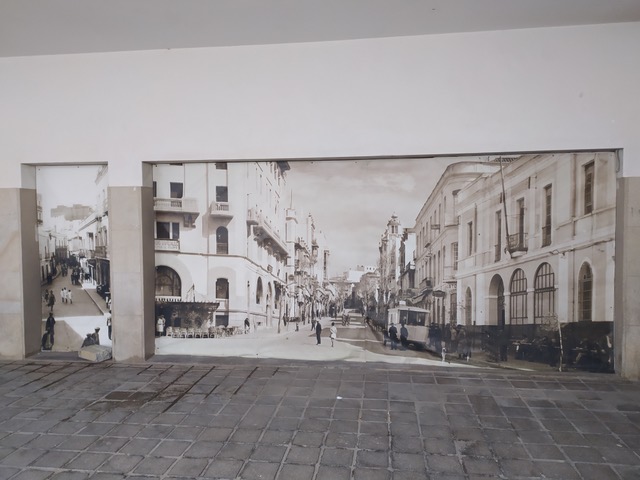
Wall with old photograph from Ceuta. Photo © Karethe Linaae
But all is not ancient. By the towns conference centre, there is a modern sculpture of four human figures. The name of the sculpture is Solidaridad, which means solidarity in Spanish. I guess that it refers to the four cultures that usually live relatively peacefully together in Ceuta. At the same time, it made me think of the young boys we met who had escaped across the border, now without either family or home. Is Spain showing them enough solidarity. And am I?

‘Solidaridad’. Photo © Karethe Linaae
Sunset over the Strait of Gibraltar
The best way to see Ceuta, is to go to higher ground. In contrast to Melilla, which has permitted housing developments in its entire territory, Ceuta has large, protected nature parks both in the hilly western parts against Morocco and in the eastern ‘fist’ of Monte Hacho.
Hacho is only 204 meters high but is still the most prominent rock formation in Ceuta. It is also the area most exposed to attacks and therefore the most fortified part of the city. The fort was started around the Year 900, and part of it is still a restricted army compound. Thankfully, it is still possible to follow the trail along the fortified walls for several kilometres, circumventing the entire fort, with the most remarkable views of the Mediterranean and the Straits of Gibraltar.
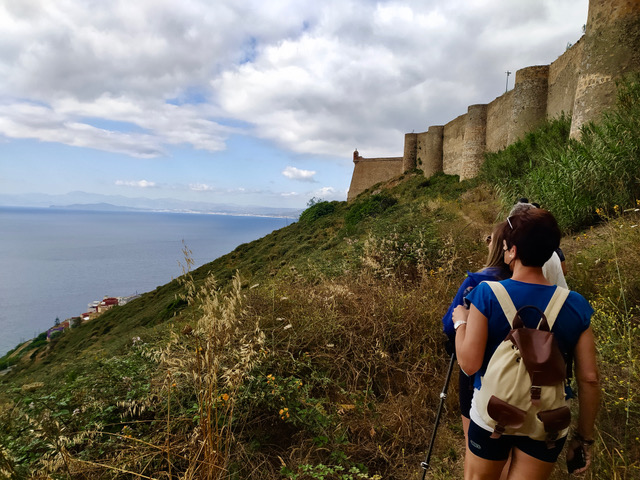
The fortress wall with the Mediterranean in the background. Photo © Karethe Linaae
To the West of the city there are almost jungle-like forests with a selection of scenic walking trails. The country border with Morocco can clearly be seen in the distance, while walking from one old watchtower to the next. These defensive bastions, though ancient looking, were not only used in Medieval times but also in the many wars with Morocco, the last one being just back in the 1950s. But on the trail today we only meet friendly Ceuta families having picnics while waiting for the sun to set.
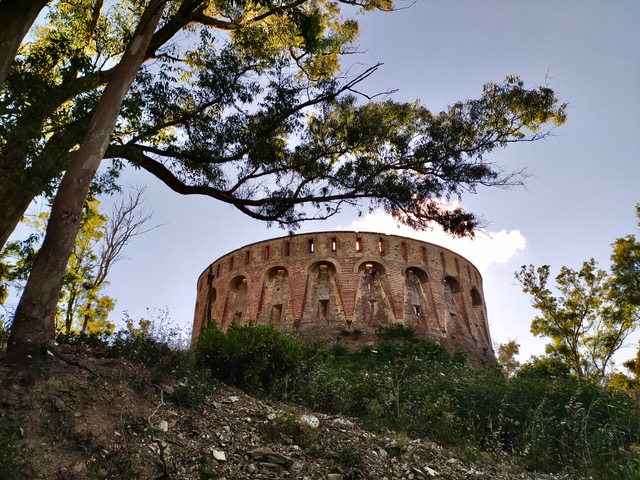
Watch tower. Photo © Karethe Linaae
Perhaps the most stunning dusk I ever experienced is when the sun dips into the Atlantic, painting the sky about the Straits of Gibraltar in incredible shares of lavender and orange. We stand at the end of a cliff on the Spanish side, peeking down at the picturesque Moroccan village of Belyounech beneath us, with the mountain Jebel Musa and the dead woman, above us. Here there are no borders, just nature, rocks, ocean, and heaven.
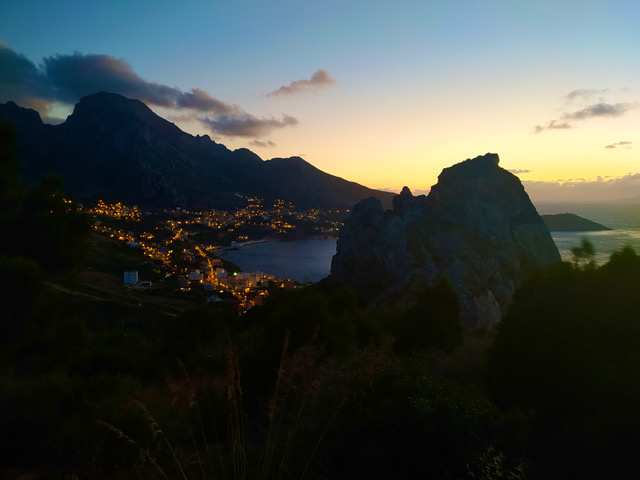
Morocco’s Jebel Musa and Belyounech, photographed from the Spanish independent territory of Ceuta. Photo © Karethe Linaae
I stop and talk to two young women who are celebrating their high school graduation. Both are ceutí. One wears a Muslim head scarf, the other does not, and they are best friends. They made me think of the Solidary sculpture in town. I can hope that these girls represent the future for Ceuta and Morocco - one of solidarity, understanding and co-existence despite our differences.
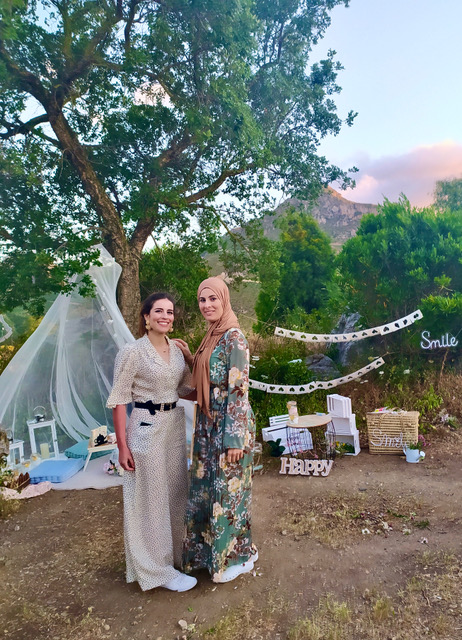
Girlfriends from Ceuta celebrating graduation. Photo © Karethe Linaae